Botanical Names
Citrus aurantifolia
Common Names
| Malaysia | Limau nipis, limau asam, limau masam, limau amkian |
| English | Lime, Mexican lime, acid lime, west Indian lime, sour lime, large lime, key lime |
| Indonesia | Jeruk neepis/jeruk nipis |
Family
Rutaceae
Introduction
‘Limau Nipis’ is reported to be native to South East Asia countries. It has been introduced through the Middle East countries, North Africa and finally to other tropical and sub-tropical of North America and Mexico. In Malaysia, the ‘Limau Nipis’ is commonly planted for its fruits which are normally used in Malaysian cooking.[1]
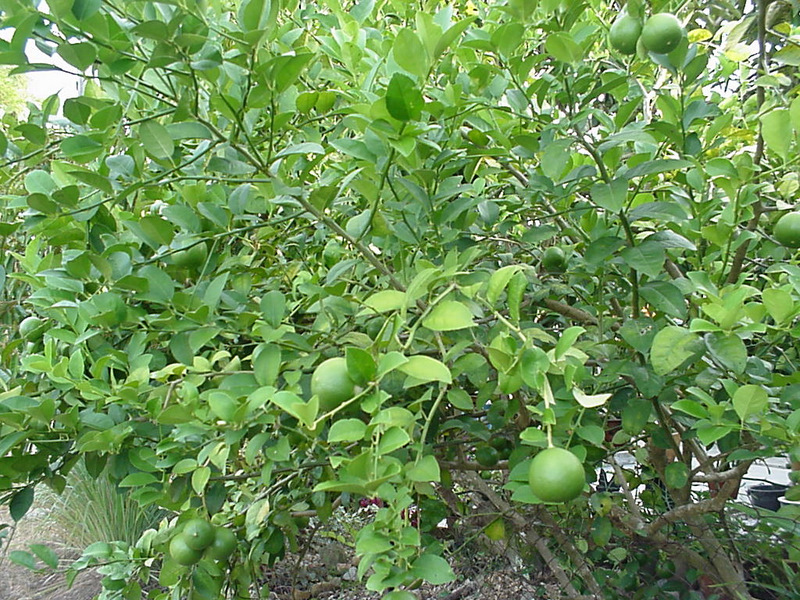
Morphological Features
‘Limau Nipis’ is a perennial shrub often with branches originates from the lower part of the main stem and has many sharp thorns. The main stem rarely grows straight. Without proper crop pruning, the plant can grow up to 5 m in height. The leaves are ovate in shape, glossy green in colour and 4-8 cm in length. The flowers are yellowish white in colour, about 2.5 cm in diametre with a light trace of purple on the margins. The young fruits are green in colour and turn yellowish in colour as it starts to mature. The fruits are spherical in shape, having generally smooth skin and measuring about 4.0 cm in diametre. The fruits produce plenty of sour juice when crushed.[1]
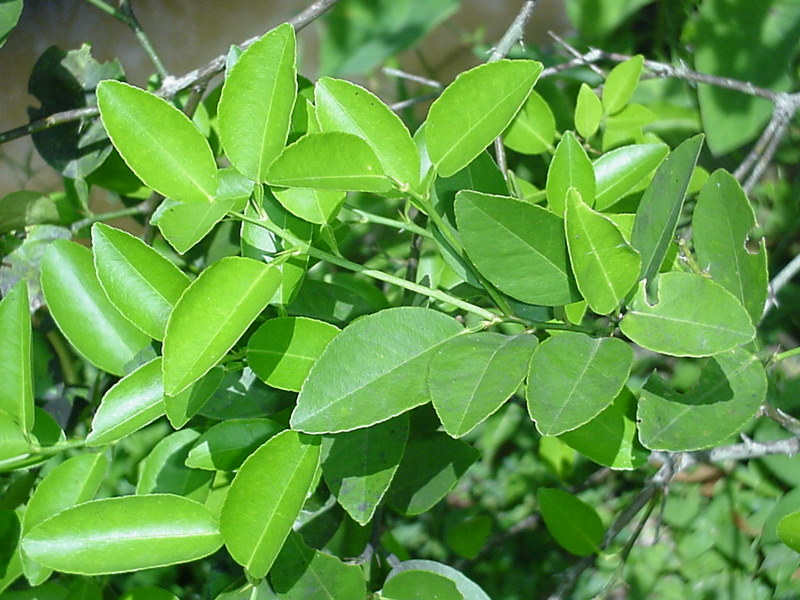
Medicinal Properties and Usage
In Malaysia, the fruits are normally used in flavoring soup preparations and as juice. The fruits are also used in the herbal bath preparations for the afterbirth treatments and as preparations for the treatments of sinuses, headache, sore throat, cough, dysentery, dandruff, fever and stomachache. The lime extracts are frequently used in perfumes, cleaning products and aromatherapy. The fruits are also processed into cordial of fresh drinks.[1][2][3][4]
Soil Suitability and Climatic Requirement
Like other Citrus species, ‘limau purut’ is also well adapted and can be cultivated on most soil types from the coastal areas to the upland at about 400 m above sea level with the temperature range of 25-38°C. It is best grown under full sunlight on well-drained soils with water table of more than 60 cm. The plant needs about 2,000 to 3,000 mm of annual rainfall.[1]
Field Preparation
Land Preparation
The land preparations activities required before planting includes land clearing, disc ploughing and rotovation. This helps to improve the soil structure and to eliminate weeds. Triple Super Phosphate (TSP) and Ground Magnesium Limestone (GML) at the rate of 100 g/planting each is applied to each planting hole measuring 30 cm X 30 cm X 30 cm. In field drainage is required to avoid flash flood.[1]
Production of Planting Materials
The fruits of ‘limau nipis’ do produce a good number of viable seeds. Thus, seeds are normally used in the production of planting materials. The seeds are firstly sowed in the nursery trays and the germinated seedlings are then transplanted to the polybags measuring about 13 cm X 18 cm when it has about 3 to 4 leaves. It is important to note that the seeds cannot withstand long storage and thus should be sowed within a few days after being collected. The seedlings are ready for planting when it has 7 or 8 leaves or after 7-8 months in the polybags. Cuttings can also be used as the planting materials, but it has no good taproots system.[1]
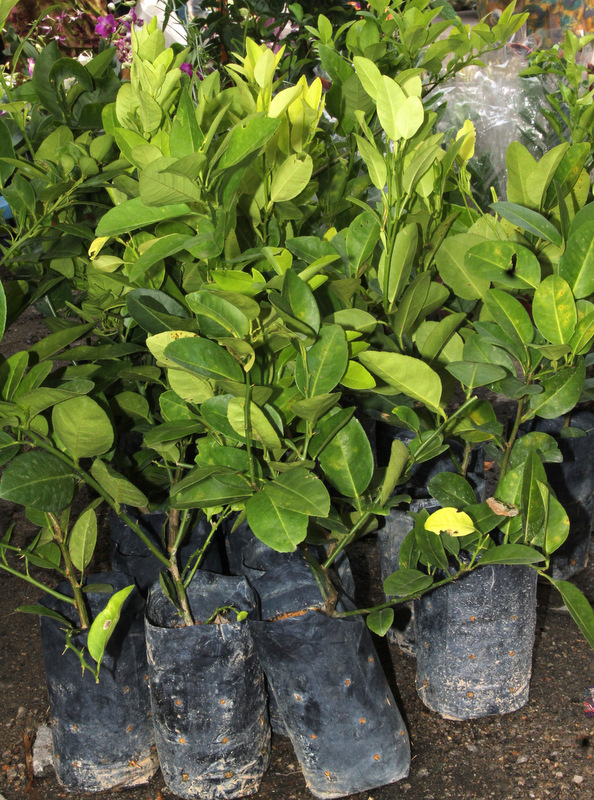
Field Planting
The recommended planting system is hedgerow planting with the spacing of 4 m between rows and 2.5 m between plants in a row. These will give the population density of about 1,000 plants/ha. Organic mulch in the form of dried coconut leaves or rice straw should be used where possible to conserve moisture and control weeds around the growing point. To minimise the effect of transplanting stress, field planting should be done at the beginning of the rainy seasons.[1]
Field Maintenance
Fertilisation
Both the organic (chicken dung) and compound fertilisers are required for optimum crop growth. Chicken manure is applied in the first year only at the rate of 1.0 kg/plant. Half of the rate is given at planting while the other half 6 months later. Compound fertiliser (NPK=15:15:15:17) is applied at the rate of 300, 400 and 600 g/plant in the 1st, 2nd and 3rd year upward, respectively. For each rate, the NPK fertiliser is divided into four equal parts and applied at duration of 3 months intervals.[1]
Weed Control
The weed problem can be minimised if mulching is applied around the planting point. At the earlier stages of crop growth, practicing inter-row cultivation can effectively control the weeds. If necessary, the application of contact herbicides and manual weeding by using grass cutters can be practiced.[1]
Water Management
Supplementary irrigation is required for optimum crop growth and yield. Drip irrigation system is recommended for this crop since it is cheap and much easier to manage.[1]
Pest and Disease Control
Leaf miner is the most common pest found attacking the leaves. However, the infestation is normally low and does not need control measure. The most common disease is canker can be very serious if proper management practices are not followed. Pruning and defoliating heavily infected plants could control canker.[1]
Harvesting
The fruits can be harvested at about 24 months after planting. The mature fruits are light green to yellowish in colour. Harvesting can be done at fortnightly intervals by picking only the mature fruits. The potential fresh fruit yields for the fully-grown plant is about 4.6 t/ha.[1]
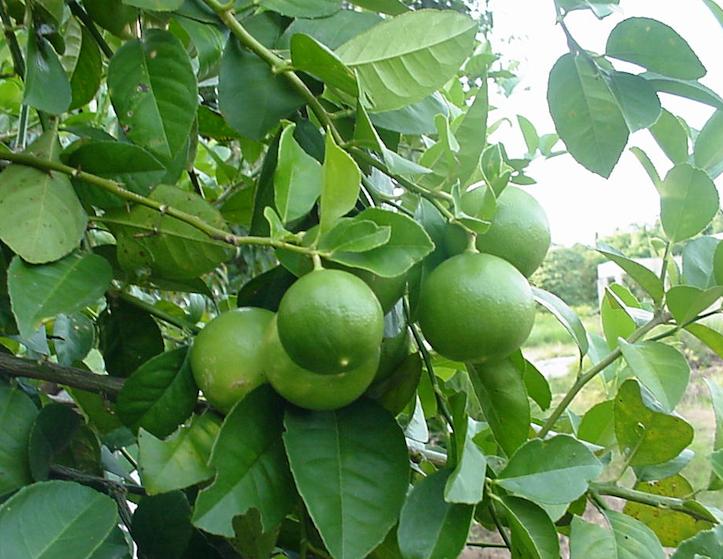
Postharvest Handling
Harvesting has to be done carefully to avoid fruit injury and contamination. The harvested fruits should immediately be transported to collection centre for cleaning, grading before being sent to then the market, storing and processing activities.[1]
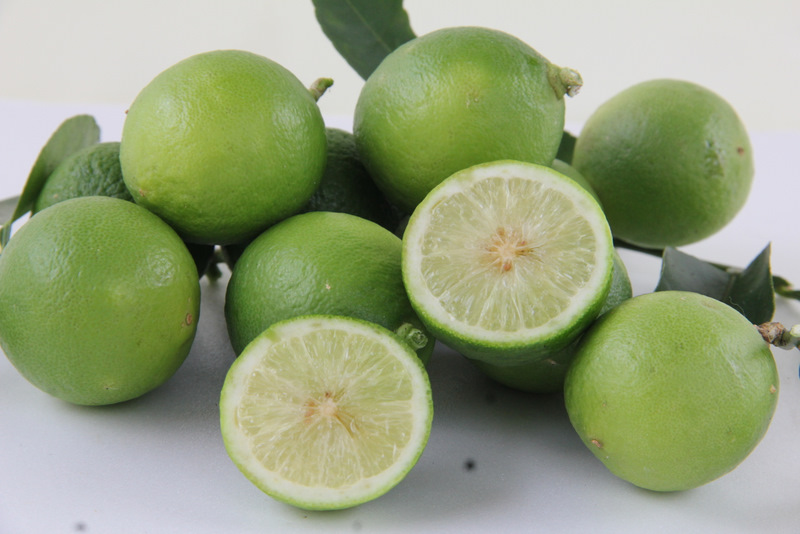
Estimated Cost Of Production
The estimated cost of production for the fully grown l’imau nipis’ is about RM 10,500/ha. This cost covers the cost of land preparations, planting materials, planting and crop maintenance. For the total fresh yield of about 4.6 t/ha, the cost of production for a kilogram of fresh fruit is RM 2.30. The production cost was estimated based on the cost of current inputs during writing of this article.[1]
Read more
References
- Anon 2010: Panduan Penanaman Limau Nipis. Kuala Lumpur : Jabatan Pertanian Semenanjung Malaysia
- Anon. 2002. Compendium of Medicinal Plants Used in Malaysia (Vol. 2) Pg 217, Kuala Lumpur : HMRC-IMR
- Burkil I. H. 2002: A Dictionary of the Economic Products of the Malay Peninsula. Kuala Lumpur: Ministry of Agriculture Malaysia
- Mat-Salleh K. and Latiff A. 2002. Tumbuhan Ubatan Malaysia. Kuala Lumpur : Universiti Kebangsaan Malaysia


